
How to Use ME60N03 4-Channel Mosfet 3: Examples, Pinouts, and Specs
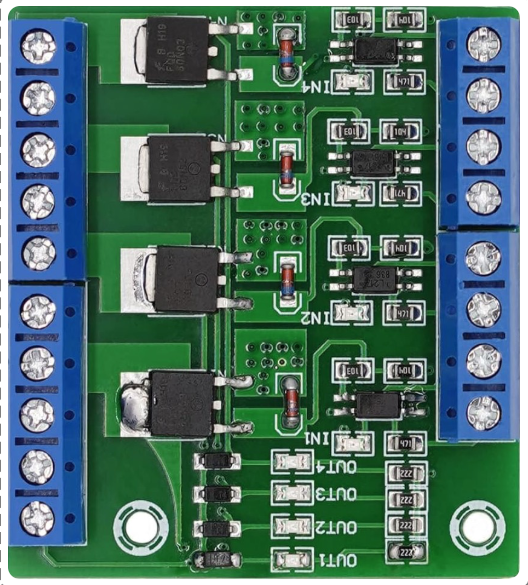
 Design with ME60N03 4-Channel Mosfet 3 in Cirkit Designer
Design with ME60N03 4-Channel Mosfet 3 in Cirkit DesignerIntroduction
The ME60N03 4-Channel MOSFET is a high-performance N-channel MOSFET designed for efficient switching applications. It features four channels for parallel operation, making it ideal for power management and control in various electronic circuits. This component is widely used in applications requiring high-speed switching, low power loss, and high current handling capabilities.
Explore Projects Built with ME60N03 4-Channel Mosfet 3
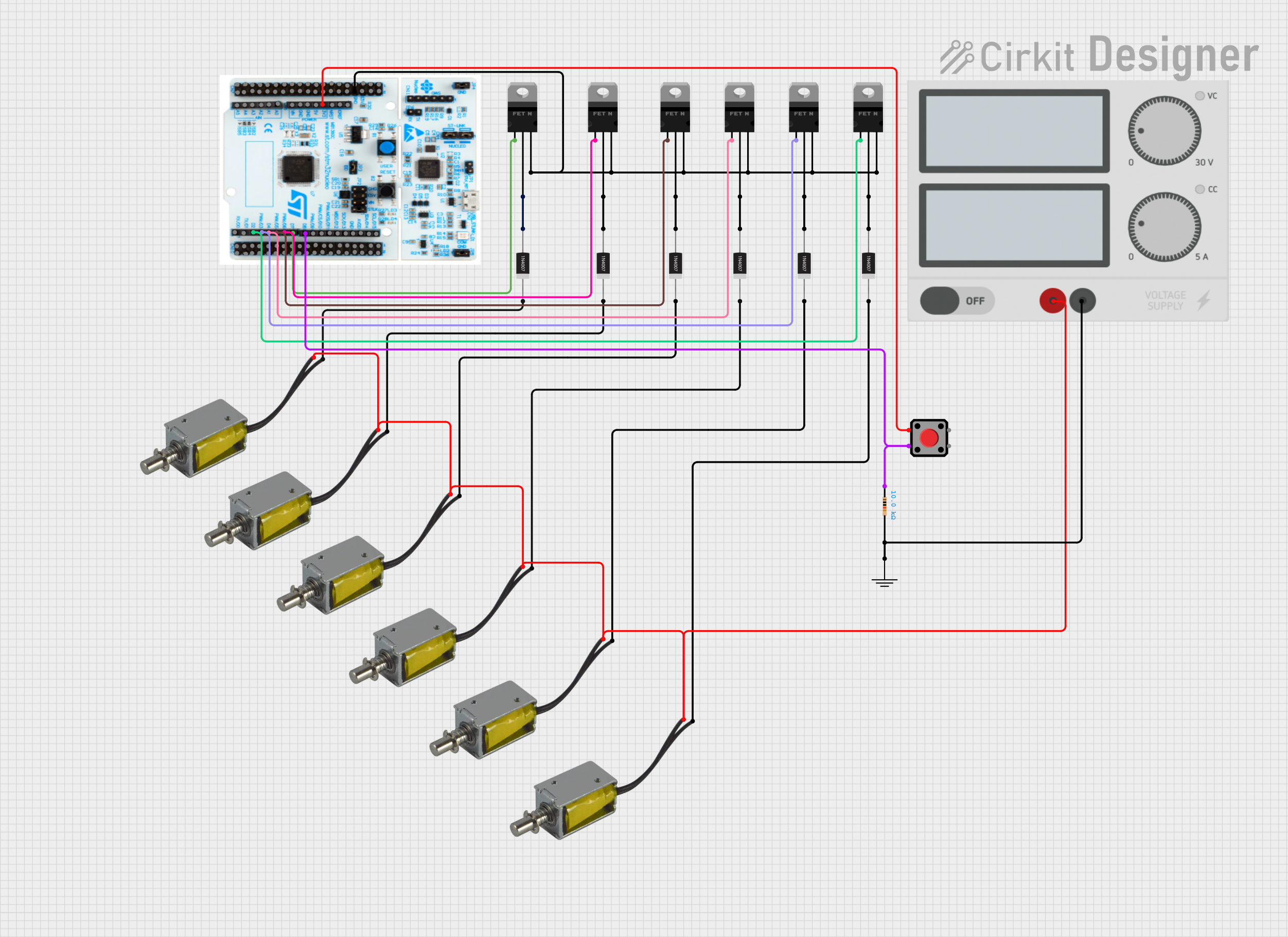
 Open Project in Cirkit Designer
Open Project in Cirkit Designer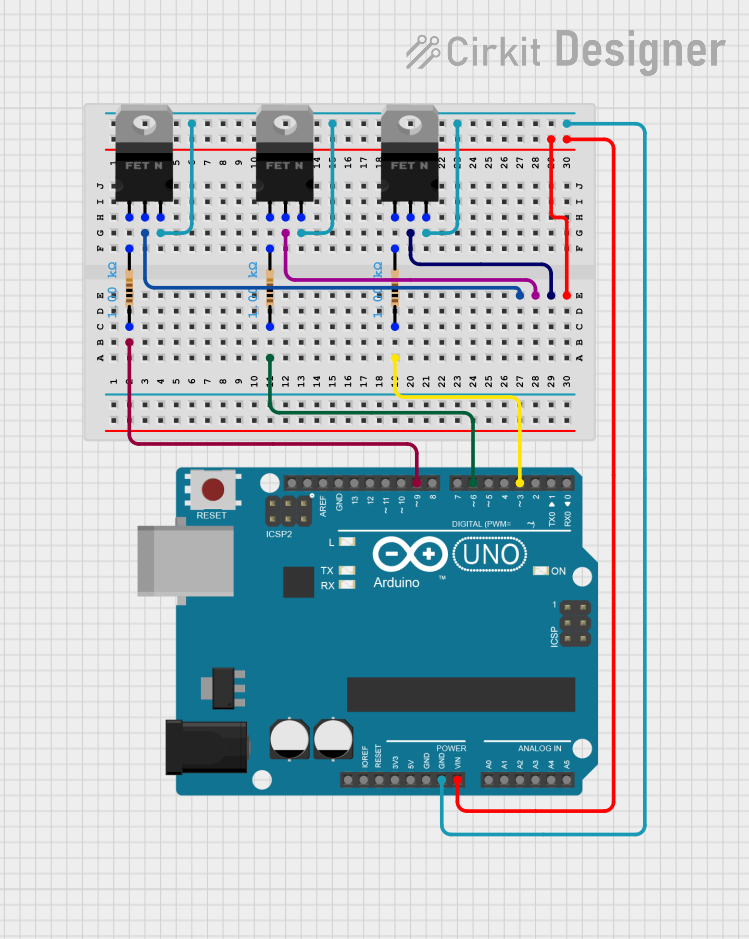
 Open Project in Cirkit Designer
Open Project in Cirkit Designer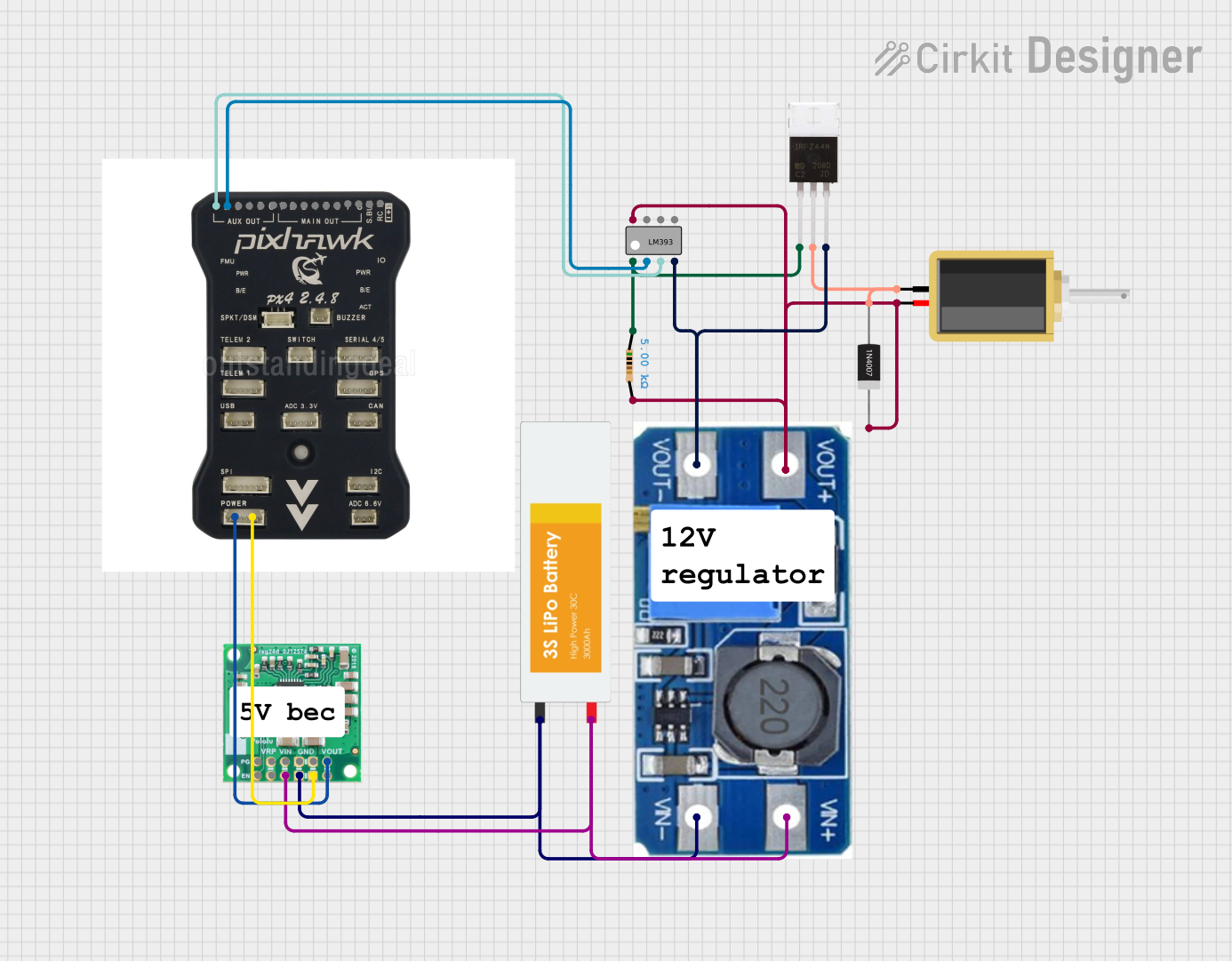
 Open Project in Cirkit Designer
Open Project in Cirkit Designer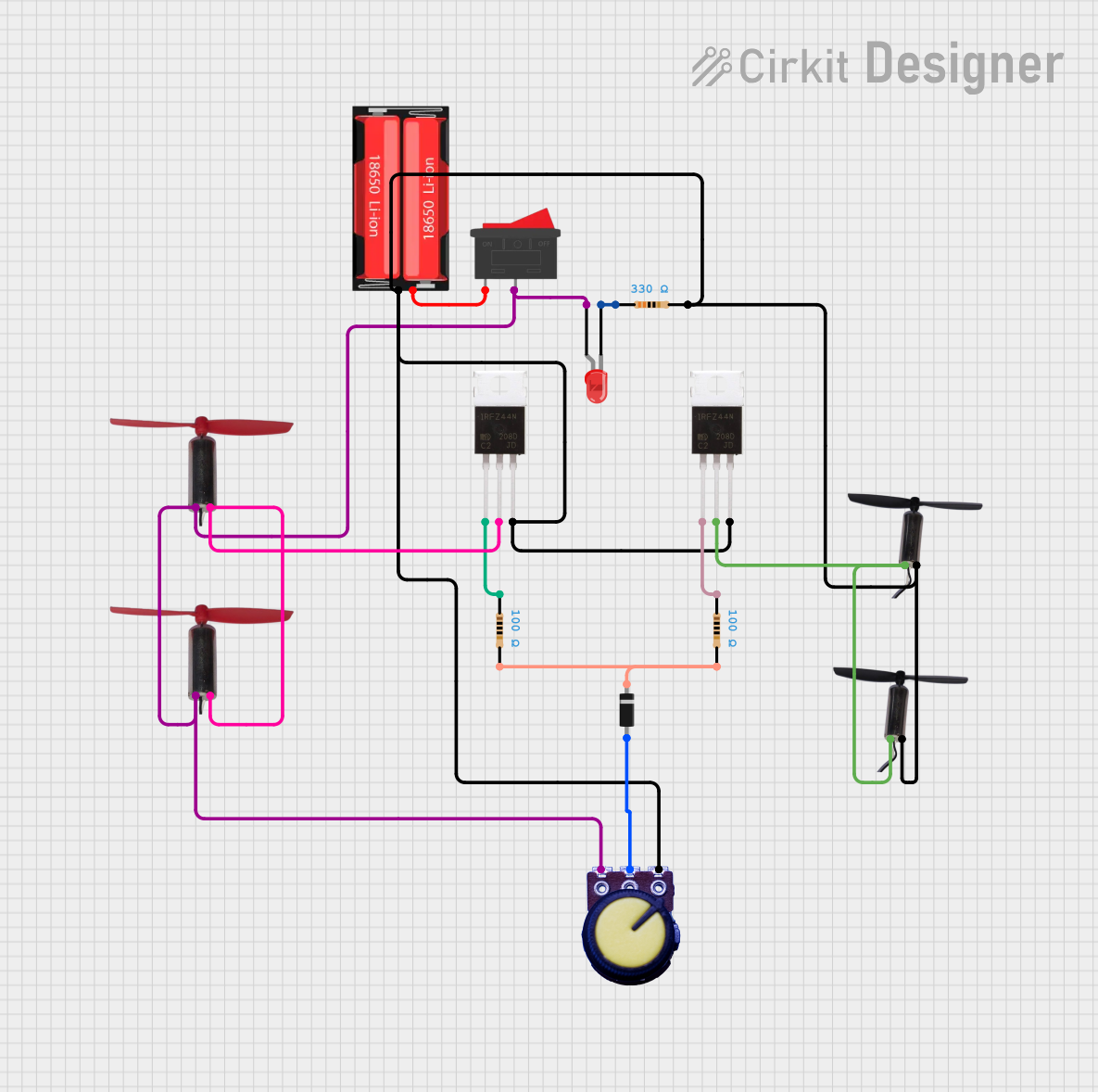
 Open Project in Cirkit Designer
Open Project in Cirkit DesignerExplore Projects Built with ME60N03 4-Channel Mosfet 3

 Open Project in Cirkit Designer
Open Project in Cirkit Designer
 Open Project in Cirkit Designer
Open Project in Cirkit Designer
 Open Project in Cirkit Designer
Open Project in Cirkit Designer
 Open Project in Cirkit Designer
Open Project in Cirkit DesignerCommon Applications
- Motor control and driver circuits
- DC-DC converters
- Power management in embedded systems
- LED drivers
- Battery management systems
Technical Specifications
Key Specifications
| Parameter | Value |
|---|---|
| Type | N-Channel MOSFET |
| Number of Channels | 4 |
| Maximum Drain-Source Voltage (VDS) | 30V |
| Maximum Gate-Source Voltage (VGS) | ±20V |
| Continuous Drain Current (ID) | 60A (per channel) |
| Maximum Power Dissipation (PD) | 150W |
| RDS(on) (Drain-Source On Resistance) | 0.012Ω (typical) |
| Operating Temperature Range | -55°C to +175°C |
| Package Type | TO-220 |
Pin Configuration and Descriptions
The ME60N03 4-Channel MOSFET is typically housed in a TO-220 package. Below is the pin configuration:
| Pin Number | Pin Name | Description |
|---|---|---|
| 1 | Gate 1 | Gate terminal for Channel 1 |
| 2 | Gate 2 | Gate terminal for Channel 2 |
| 3 | Gate 3 | Gate terminal for Channel 3 |
| 4 | Gate 4 | Gate terminal for Channel 4 |
| 5 | Drain | Common drain terminal for all channels |
| 6 | Source | Common source terminal for all channels |
Usage Instructions
How to Use the ME60N03 in a Circuit
- Power Supply Considerations: Ensure the supply voltage does not exceed the maximum VDS (30V) or VGS (±20V) ratings.
- Gate Drive: Use a gate driver or microcontroller to control the gate terminals. A voltage of 10V is typically recommended for full enhancement.
- Parallel Operation: The four channels can be used in parallel to handle higher currents. Ensure proper heat dissipation when operating at high power.
- Load Connection: Connect the load between the drain and the positive supply voltage. The source terminal should be connected to ground.
Example Circuit with Arduino UNO
Below is an example of how to control one channel of the ME60N03 using an Arduino UNO to drive a motor:
Circuit Connections
- Connect the Gate 1 pin to Arduino digital pin 9 through a 220Ω resistor.
- Connect the Drain pin to one terminal of the motor.
- Connect the other terminal of the motor to the positive supply voltage (e.g., 12V).
- Connect the Source pin to ground.
Arduino Code
// Example code to control the ME60N03 MOSFET with Arduino UNO
// This code turns the motor ON for 2 seconds and OFF for 2 seconds.
const int mosfetGatePin = 9; // Pin connected to Gate 1 of the MOSFET
void setup() {
pinMode(mosfetGatePin, OUTPUT); // Set the MOSFET gate pin as output
}
void loop() {
digitalWrite(mosfetGatePin, HIGH); // Turn the MOSFET ON (motor ON)
delay(2000); // Wait for 2 seconds
digitalWrite(mosfetGatePin, LOW); // Turn the MOSFET OFF (motor OFF)
delay(2000); // Wait for 2 seconds
}
Important Considerations
- Heat Dissipation: Use a heatsink with the TO-220 package to prevent overheating during high-current operation.
- Gate Resistor: Always use a resistor (e.g., 220Ω) between the microcontroller and the gate to limit inrush current and protect the microcontroller.
- Flyback Diode: When driving inductive loads (e.g., motors), include a flyback diode across the load to protect the MOSFET from voltage spikes.
Troubleshooting and FAQs
Common Issues and Solutions
MOSFET Overheating
- Cause: Insufficient heat dissipation or excessive current.
- Solution: Attach a heatsink to the TO-220 package and ensure the current is within the rated limits.
MOSFET Not Switching
- Cause: Insufficient gate voltage or incorrect wiring.
- Solution: Verify that the gate voltage is at least 10V for full enhancement. Check all connections.
Load Not Operating
- Cause: Incorrect load connection or damaged MOSFET.
- Solution: Ensure the load is properly connected between the drain and the positive supply. Test the MOSFET with a multimeter.
Arduino Resetting
- Cause: High inrush current from the gate damaging the microcontroller.
- Solution: Use a gate resistor (e.g., 220Ω) to limit the current.
FAQs
Q1: Can I use the ME60N03 with a 3.3V microcontroller?
A1: The ME60N03 requires a gate voltage of at least 10V for full enhancement. Use a gate driver circuit to step up the 3.3V signal.
Q2: Can I use all four channels simultaneously?
A2: Yes, the four channels can be used in parallel to handle higher currents. Ensure proper heat dissipation and balanced current sharing.
Q3: What is the maximum current the ME60N03 can handle?
A3: Each channel can handle up to 60A. When using all four channels in parallel, the total current capacity is 240A, provided proper cooling is implemented.
Q4: Is the ME60N03 suitable for high-frequency switching?
A4: Yes, the ME60N03 is designed for high-speed switching applications. However, ensure the gate driver can handle the required switching frequency.